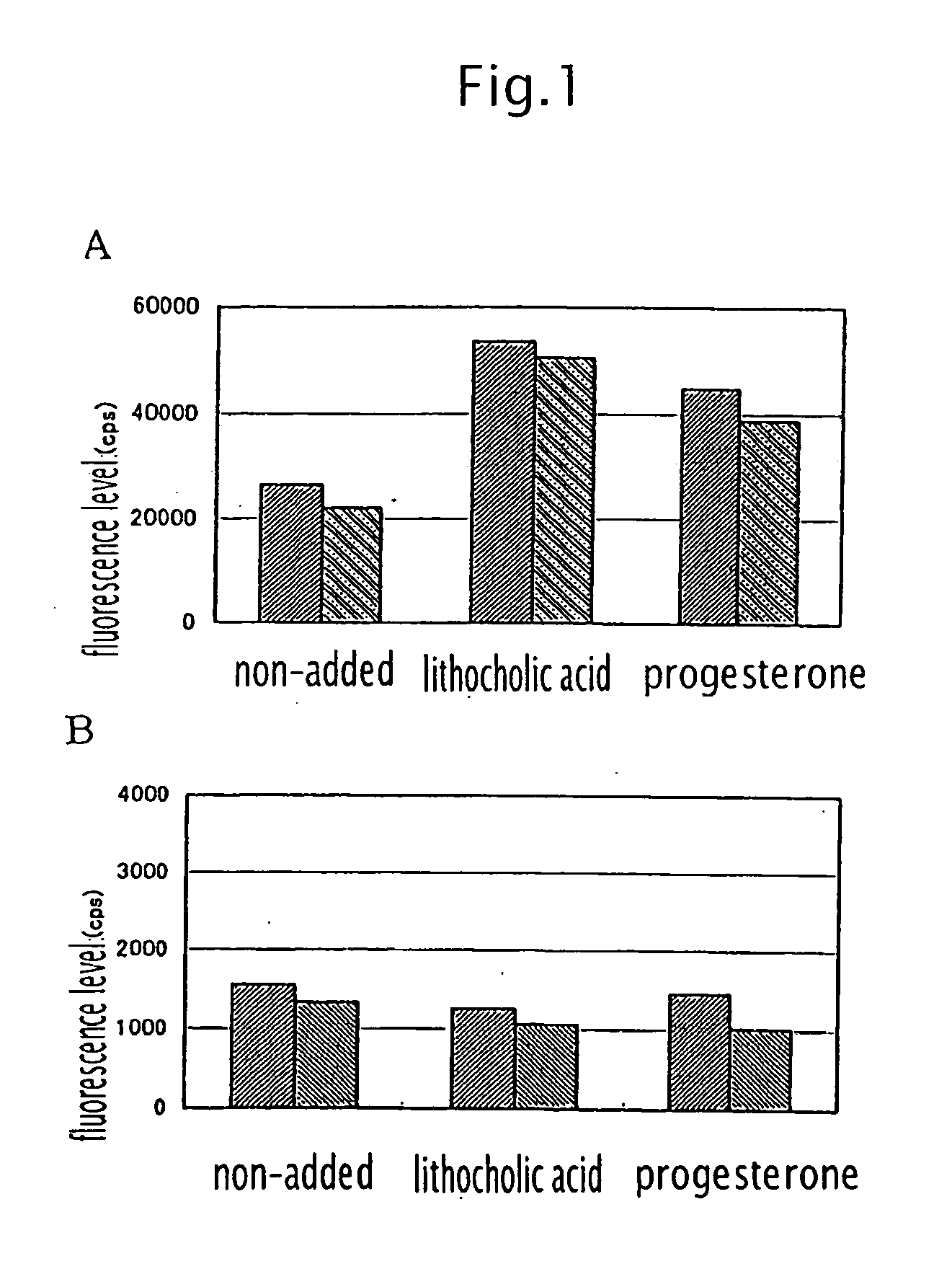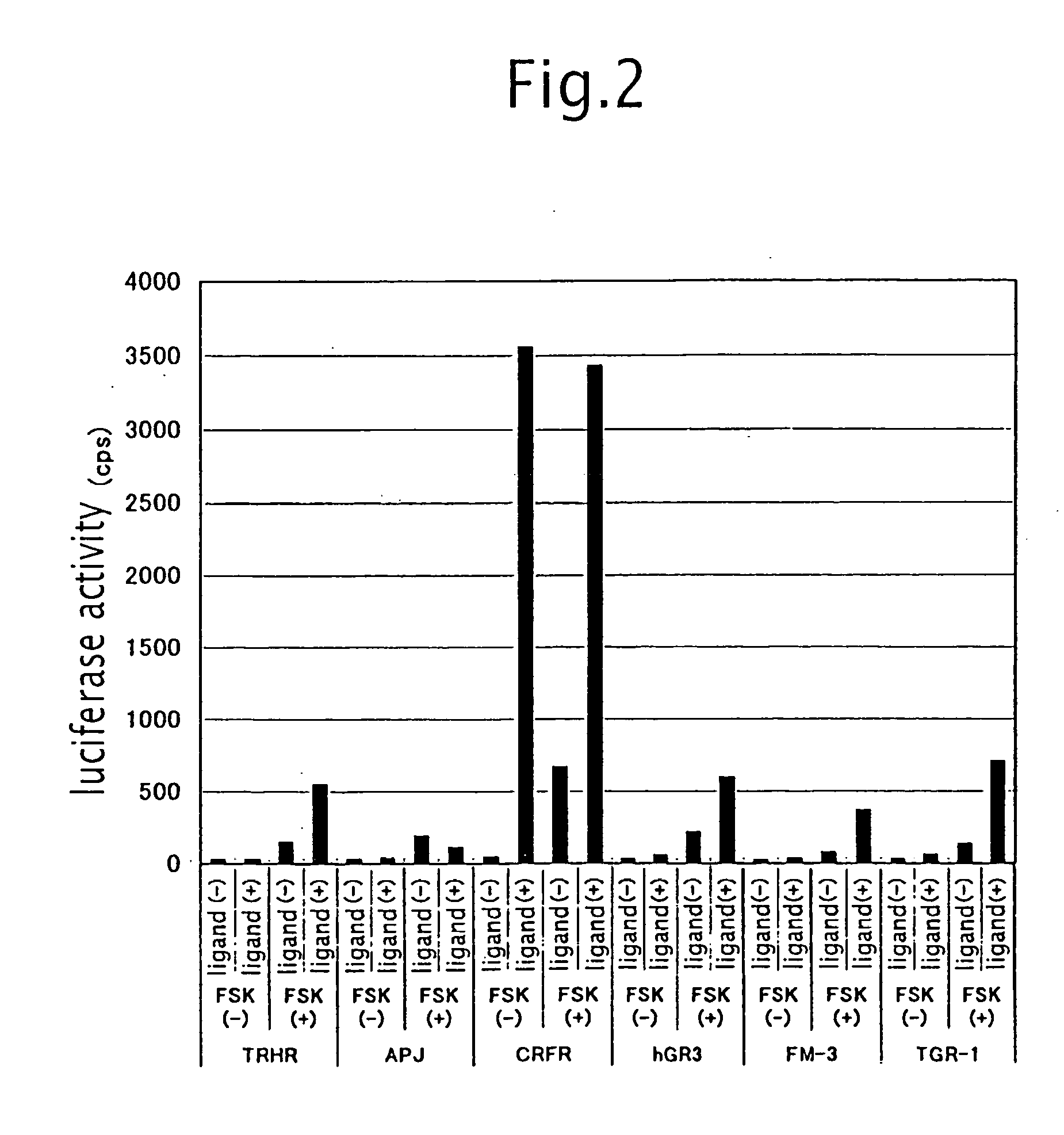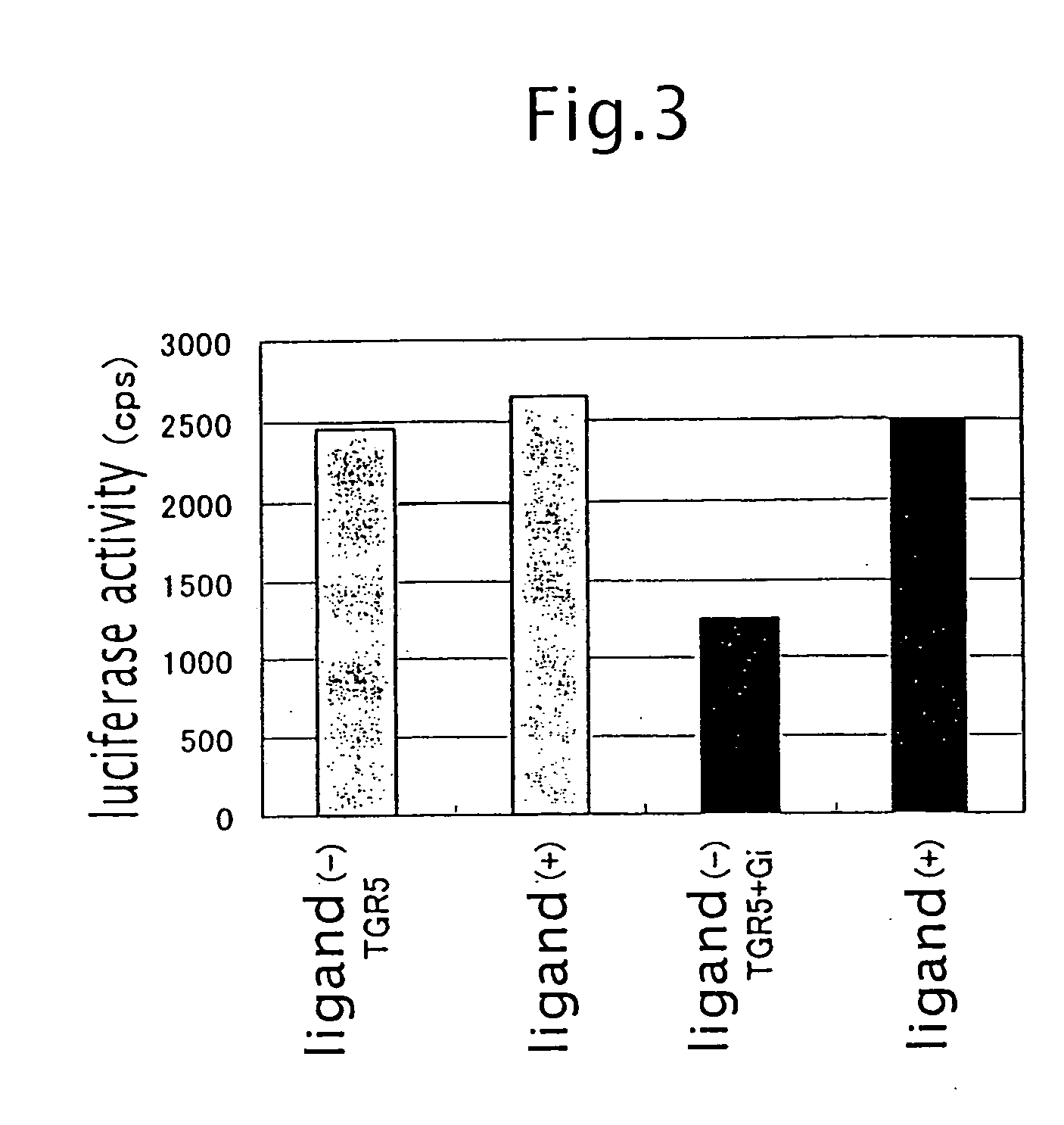Method of determining ligand
a ligand and protein technology, applied in the field of determining a ligand to a receptor protein, can solve the problems of difficult assay, limited usable cell lines, and long tim
- Summary
- Abstract
- Description
- Claims
- Application Information
AI Technical Summary
Benefits of technology
Problems solved by technology
Method used
Image
Examples
reference example 1
Cloning of cDNA Encoding G Protein-Coupled Receptor Protein of Human Spleen and Determination of the Base Sequence
[0425] Using human spleen-derived cDNA (Clontech) as a template and two primers, namely, primer 1 (SEQ ID NO: 11) and primer 2 (SEQ ID NO: 12), PCR was carried out. The reaction solution in the above reaction comprised of 1 / 10 volume of the cDNA described above as a template, 1 / 50 volume of Advantage-GC2 Polymerase Mix (Clontech), 0.5 μM each of primer 1 (SEQ ID NO: 11) and primer 2 (SEQ ID NO: 12), 200 μM of dNTPs, 1 / 5 volume of a buffer attached to the enzyme product and 1 / 5 volume of GC Melt to make the total volume 20 11. The PCR reaction was carried out by reacting at 94° C. for 5 minutes, then repeating 30 times a cycle set to include 94° C. for 30 seconds, 60° C. for 30 seconds and 68° C. for 2 minutes, and finally conducting extension at 68° C. for 5 minutes. The PCR product was subcloned to plasmid vector pCR4 (Invitrogen) following the instructions attached t...
reference example 2
Detection of Reporter Activation with Cholesterol Metabolism-Related Substance in Human HEK293 Cells wherein TGR5 was Expressed Transiently
[0426] The TGR5-specific stimulation activity by cholesterol metabolism-related substance was detected using as an indicator the expression level of a reporter gene product (luciferase) produced by expression induction of CRE promoter.
[0427] Human-derived HEK293 cells were suspended in growth redium (DMEM (Dulbecco's Modified Eagle Medium) (Gibco BRL) supplemented with 10% fetal cow serum (Gibco BRL)). The suspension adjusted to a concentration of 1×105 cells / well was plated on a collagen-coated black well 96-well plate (Becton Dickinson, Inc.).
[0428] After culturing overnight at 37° C. under the 5% CO2 condition, the TGR5 gene was inserted into an expression vector for animal cell pAKKO-111H (the same plasmid vector as pAKKO-1.111H described in Biochem. Biophys. Acta, Hinuma, S. et al., 1219, 251-259, 1994) by publicly known methods, togethe...
reference example 3
Transfection of G Protein-Coupled Receptor Protein-Expressed Plasmid and Reporter Plasmid to Host Cells
[0432] Using expression plasmids for animal cells inserted with various G protein-coupled receptor protein cDNAs prepared by publicly known methods, i.e., thyrotropin releasing hormnone receptor (TRHR), neuromedin U receptor (FM-3 and TGR-1), prolactin releasing factor receptor (hGR3), apelin receptor (APJ), etc., Escherichia coli JM109 was transfected and the colonies obtained were isolated and cultured. Thereafter, plasmid was prepared using QIAGEN Plasmid Maxi Kit (Qiagen). Furthermore, the reporter plasmid of pCRE-Luc (Clontech) ligated with a luciferase gene as a reporter at the downstream of cAMP response element (CRE) was prepared in a similar manner.
[0433] Human HEK293 cells as host cells for transfecting the G protein-coupled receptor protein and the reporter plasmid thereto were plated on a type I collagen-coated 96-well black plate (Becton Dickinson, Inc.) in 100,000 ...
PUM
| Property | Measurement | Unit |
|---|---|---|
| Transport properties | aaaaa | aaaaa |
| Fluorescence | aaaaa | aaaaa |
| Level | aaaaa | aaaaa |
Abstract
Description
Claims
Application Information
 Login to View More
Login to View More - R&D
- Intellectual Property
- Life Sciences
- Materials
- Tech Scout
- Unparalleled Data Quality
- Higher Quality Content
- 60% Fewer Hallucinations
Browse by: Latest US Patents, China's latest patents, Technical Efficacy Thesaurus, Application Domain, Technology Topic, Popular Technical Reports.
© 2025 PatSnap. All rights reserved.Legal|Privacy policy|Modern Slavery Act Transparency Statement|Sitemap|About US| Contact US: help@patsnap.com



